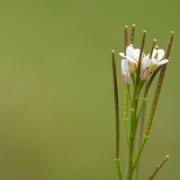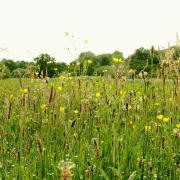The Bats in Churches project is appealing for volunteers in Norfolk to come forward and help with the final year of the National Bats in Churches Survey, an ambitious citizen science project to discover more about how and why bats are using churches
It’s thought at least 60% of pre-16th Century churches in England house bat roosts, but the true figure could be much higher. Bats in Churches, a partnership between heritage and conservation organisations, is calling for intrepid volunteers to search for serotines, peek for pipistrelles, hunt for greater horseshoes and nosy for noctules this summer.
Bats have been associated with churches for centuries. With complex structures packed full of cosy nooks and crannies, not to mention churchyards bursting with wildflowers attracting tasty insects for bats to eat, churches make great homes for these threatened animals that are so vulnerable to habitat loss. Some of our churches are home to nationally and internationally important roosts.

The Bats in Churches survey began in 2019 and this will be its year. Last year it discovered bats in just over half of the 219 churches surveyed and recorded nine bat species, including some new to the study. It also, for the first time, verified Brandt’s bat and whiskered bat through DNA in their droppings, collected during the surveys and had its first recording of either Leisler’s bat or noctule, not bats which are normally associated with churches.
Overall, it recorded 13 different species of bats in churches so far. The project has found that when bats are found in churches, multiple species are often present and it has recorded five different species in six churches across the country.
Claire Boothby, training and surveys officer at Bats in Churches, said: “If you have an interest in churches, bats or both I'd encourage you to get involved. The surveys are something that everyone can do, even if you are new to the world of bat surveys.
“The records will be key in telling us more about bats’ use of churches, including answering questions such as how many churches in England house bat roosts and which factors affect the likelihood of bats using these cherished buildings. The findings will go towards guidance documents to help churches and conserve both the buildings and the bats.”
Volunteer Kathy Warden, who took part in the survey last year, added: “The best moment came after scouring the church for signs of bat activity to see a brown long-eared bat looking down from high up in the chancel roof. It couldn’t help but make anybody smile!’”

By signing up to take part and survey your local church, you’ll be helping the Bats in Churches project understand more about how bats are using churches. This information will be vital not only for the future conservation of bats, a protected species, but also for church communities who can struggle with the mess created by bats.
Bats in Churches also works with more than 100 of the worst-affected churches in England including churches in Walpole St Peter, Thornham, Gayton Thorpe and Wood Dalling.
No experience is needed to survey a church, you’ll find all the help and information you need on our website along with training videos and FAQs. To sign up, visit https://batsinchurches.org.uk/volunteer-bat-survey/




























